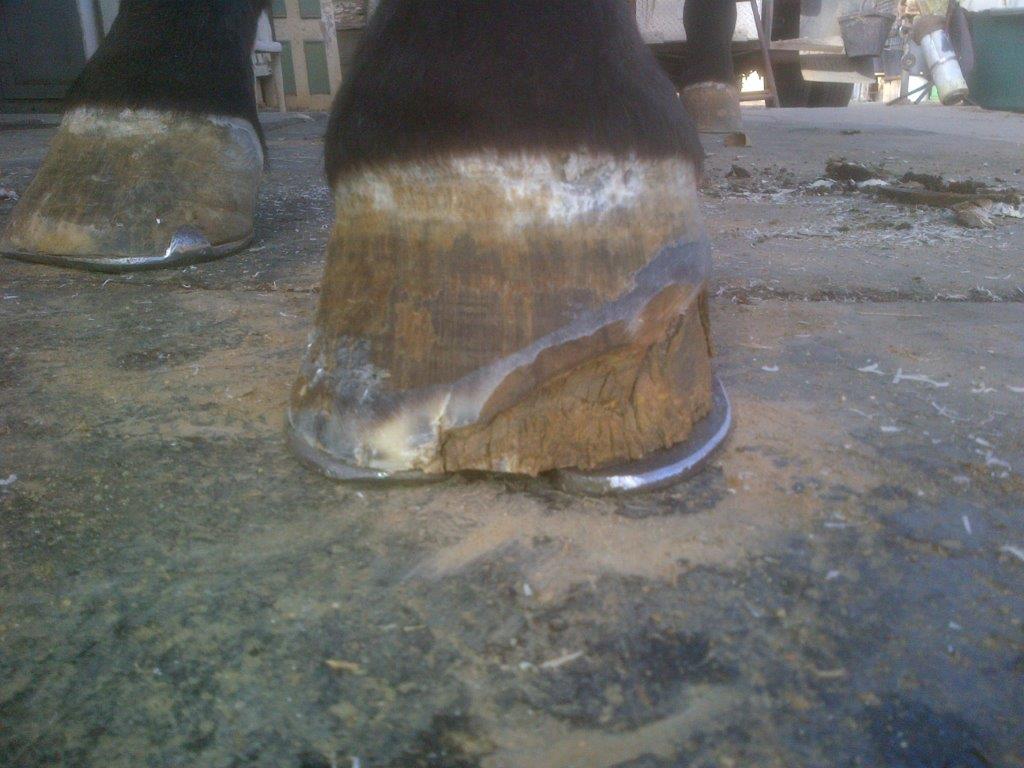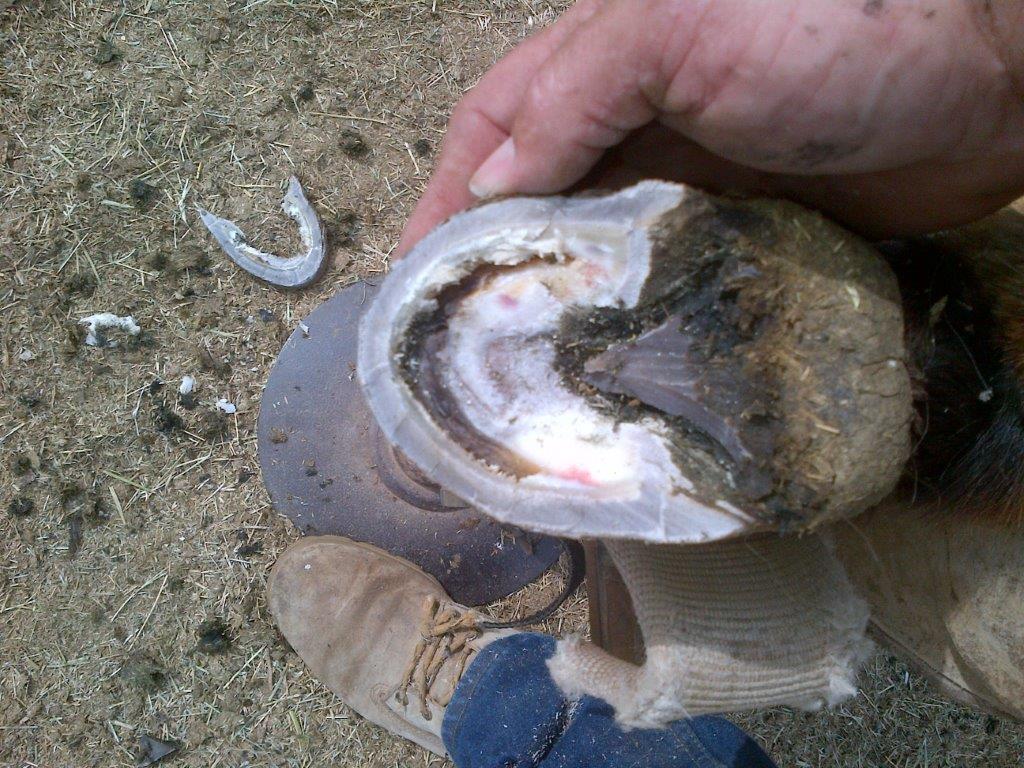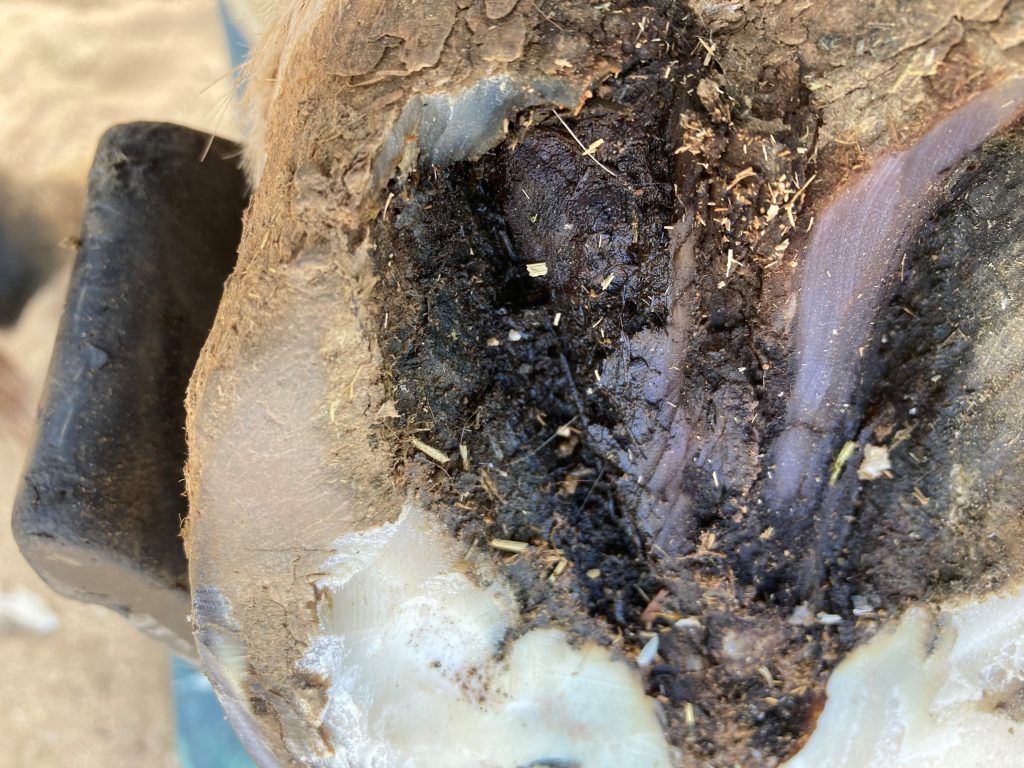Horse Thrush in Horse’s Frog
Thrush in horses frog is a bacterial infection in the frog’s tissue. The V-shaped structure located between the sole, wall, and bars in the heel area of the hoof is called the horse’s frog.
The thrush disease begins when bacteria enters the outer horn tissue of the horse’s frog, and as it progresses, the frog tissue deteriorates, looking uneven and ragged and producing a smelly discharge and odor.
In severe cases, the thrush bacteria can reach the frog’s inner tissue, which is the sensitive tissue beneath the frog, causing pain and lameness for the horse. You may even notice blood on the end of the hoof pick when cleaning the frog. This picture is a close-up of the horse’s frog to show the thrush infection areas that need to thrush specific topical treatment.
What is a Healthy Horse Frog?
To describe a healthy horse’s frog, it is well-formed, broad, and fleshy. The frog has two distinct layers: the horn tissue and the corresponding vascular layer of tissue called the sensitive corium. Beneath the sensitive layer lies a pad-like shock absorber that reduces concussion for the horse’s hoof and entire limb, called the deep digital cushion.
A healthy frog shares the load-bearing function with the other hoof structures and helps absorb concussion. This load-bearing functionality, in turn, stimulates ongoing frog health. A well-shaped frog also has a natural self-cleaning mechanism. When it comes into contact with the ground, it expands, pushing accumulated dirt and debris out of the V of the frog in the hoof and the grooves on either side of the frog.
What is an Unhealthy Horse Frog?
An unhealthy frog is recessed, shrunken inward from the surface level of the rest of the hoof, and smaller in size than it should be. Unhealthy frogs can occur for various reasons, including genetic abnormalities like clubfoot and farrier issues like a horse with sheared or high low heel sindrom.
Causes of an Unhealthy Horse’s Frog
The fundamental problem usually involves the frog and heels of the hoof capsule not being on or close to the same plane. This change in level for the frog and heel limits the frog’s contact with the ground and can reduce the stimulation from the ground surface, causing the frog to atrophy.
The recessed frog does not share in supporting the horse’s weight, so it shifts too much of the load-bearing back onto the heels of the hoof capsule. Initially, your farrier will treat the thrush-infected area like a dirty wound, trimming away the loose, diseased frog tissue and applying Outlaw Thrush Stuff. Once the frog is back on the same plane as the rest of the hoof, it will become healthy and heal quickly.
How Thrush Affects the Horse’s Frog
Thrush infections in the horse’s frog are likely to take over a hoof that is not treated and left in unsanitary conditions. A wet environment that consists of urine and acidity from decomposing manure is a breeding ground for the anaerobic bacteria attracted to any dead compromised tissue on the horse’s frog. The bacteria will form deep-seated pockets and drill into the frog and dead tissue, eating away at the remaining healthy tissue.
Despite what some people think, thrush is not caused directly by unhygienic conditions. It only develops in horses with unhealthy frogs or compromised hoofs.
The Outlaw Thrush Stuff Product
You can put a horse with healthy frogs in the worst possible conditions, for example, an excessively damp, dirty stall, and he will rarely get thrush.
On the other hand, some of the best-cared-for horses get thrush in horses frog, despite their immaculate surroundings, because their frogs aren’t healthy, and you have the right conditions for thrush to thrive.

Different Ways a Horse’s Hoof Can be Infected with Thrush
The different ways a horse’s hoof can be infected with thrush in the frog.
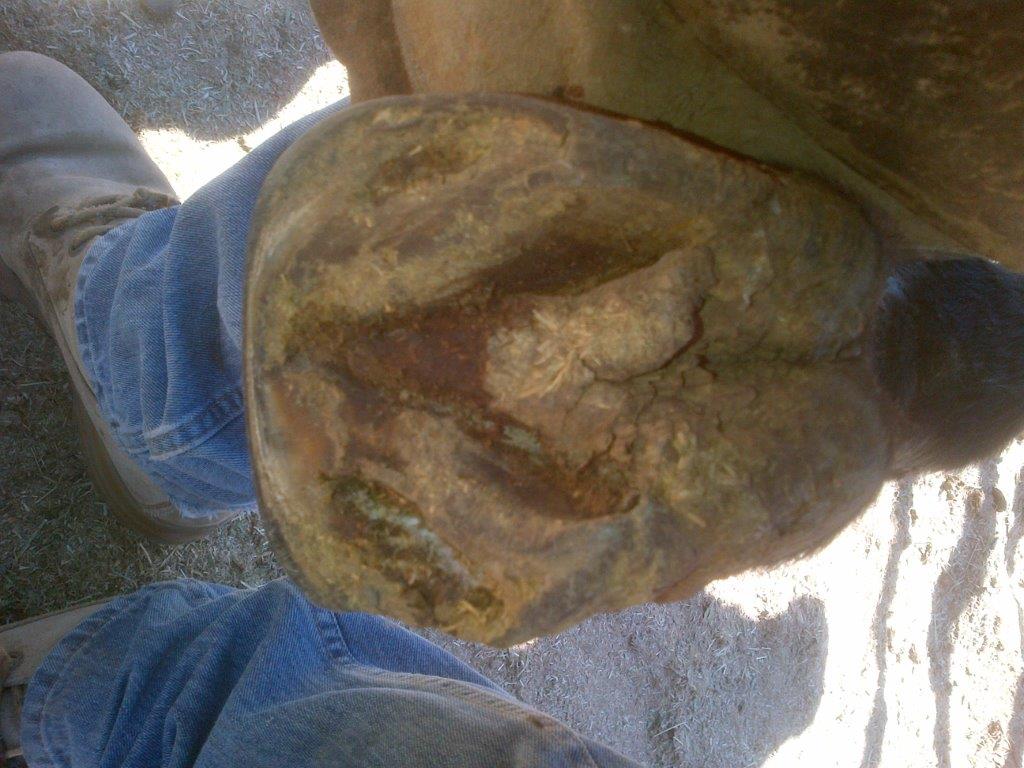
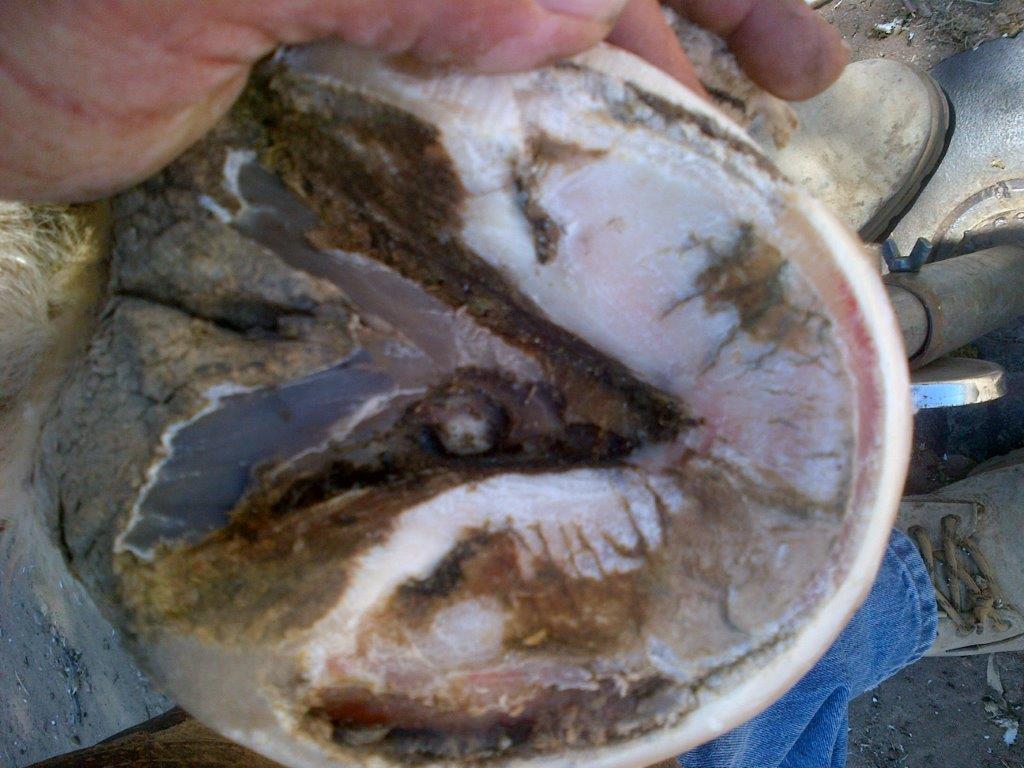
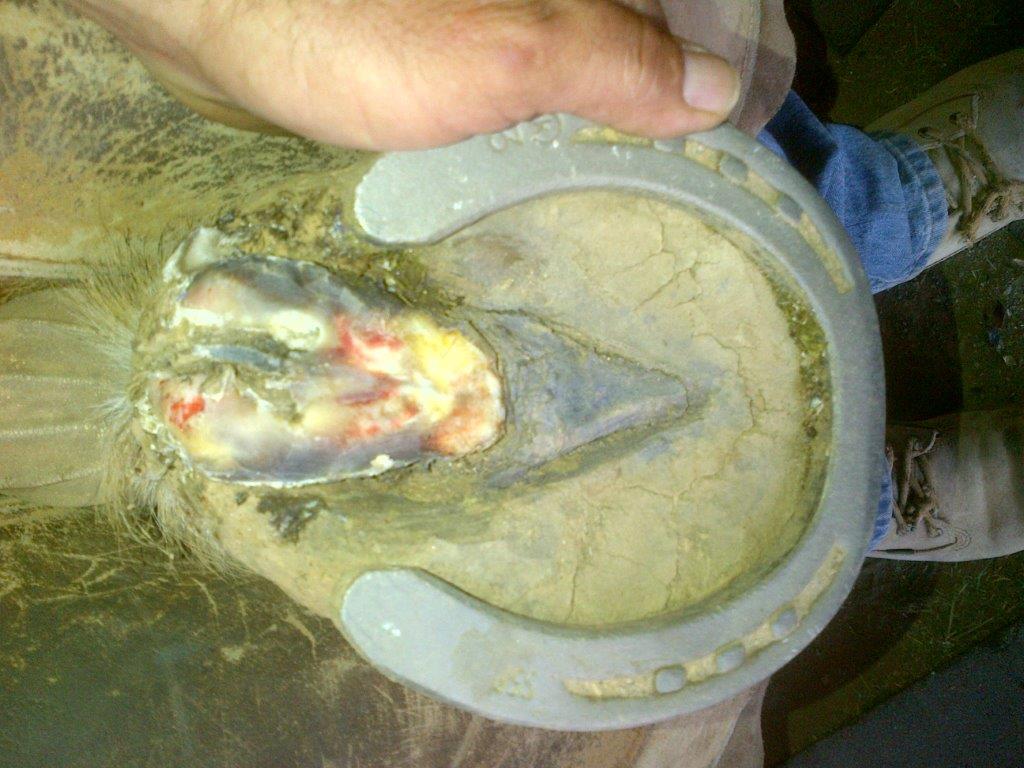
Next are horses treated for thrush using the Outlaw Thrush Stuff product.
